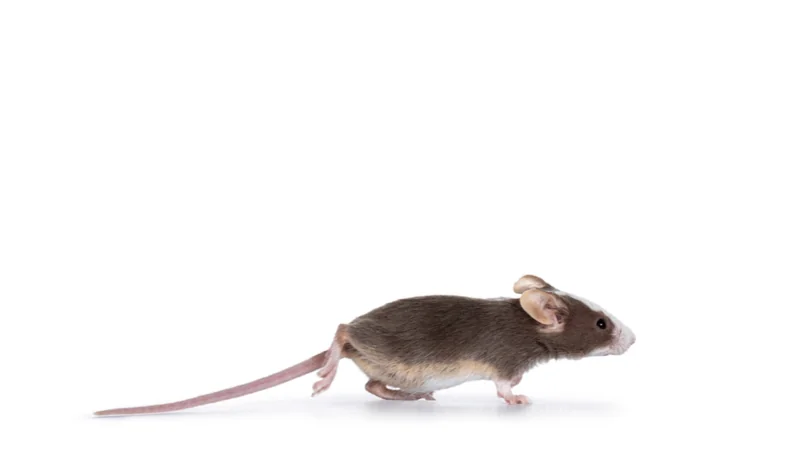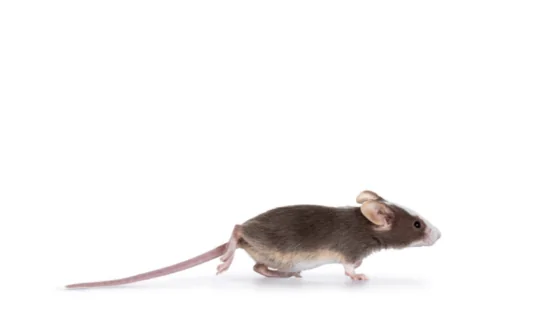A team of researchers publishing through Multidisciplinary Digital Publishing Institute has described an association between the peptide ghrelin and skeletal muscle aging in mice [1].
An appetite stimulant with potential side effects
Ghrelin is a peptide containing 28 amino acids. Its main function is to stimulate the appetite through receptors in the hypothalamus [2], but secondary functions on behavior have been suggested as well [3]. The receptor of ghrelin is growth hormone secretagogue receptor (GHS-R), and previous murine work has shown that knocking down GHS-R may be effective against diet-induced obesity [4].
Ghrelin also has studied effects on fat. Thermogenesis, the conversion of fat to heat, is regulated by GHS-R, and knocking out this receptor encourages thermogenesis in mice, according to the researchers’ previous work [5]. Irisin, a molecule released by muscle tissue (myokine), may have some opposing effects to ghrelin, most notably in the encouragement of metabolism [6]. However, the relationship between ghrelin and irisin, along with irisin’s effects on aging muscle, has not been previously elucidated.
The association between ghrelin and muscle aging
As their first step, the researchers examined the muscles of wild-type young, middle-aged, and old mice. As expected, insulin signaling and glucose transport markers dropped dramatically with age, as did mitochondrial transport markers such as SIRT1. However, GHS-R increased significantly in old animals.
The researchers then examined animals that had been genetically engineered not to express the GHS-R receptor. While metabolic markers were not restored to the levels seen in young animals, the differences between aged wild-type mice and mice without GHS-R were significant. The engineered mice also had fewer lipids in their muscle tissue.
With aging, animal muscle tissue converts from a fast-twitch to a slower type, reducing overall performance. This process did not occur to the same extent in mice without GHS-R, and this fact was reflected in superior treadmill performance.
Finally, the researchers found that irisin increased slightly but significantly in the GHS-R knockout mice. The gene FNDC5, which expresses irisin, was similarly increased in its expression.
Conclusion
While substantially more biochemical and genetic research is needed to establish the relationship, this research shows that ghrelin and irisin are connected, providing an interesting avenue of future investigations into potential therapies to alleviate sarcopenia and metabolic disorders. Notably, these mice were fed freely, and it remains to be seen whether or not these effects of ghrelin are seen in animals on more restrictive diets.
Literature
[1] O’Reilly, C., Lin, L., Wang, H., Fluckey, J., & Sun, Y. (2022). Ablation of Ghrelin Receptor Mitigates the Metabolic Decline of Aging Skeletal Muscle. Genes, 13(8), 1368.[2] Kojima, M., Hosoda, H., Nakazato, M., Matsuo, H., & Kangawa, K. (1999). Ghrelin is a growth-hormone-releasing acylated peptide from stomach. Nature, 402(6762), 656-660.
[3] Cornejo, M. P., Mustafá, E. R., Barrile, F., Cassano, D., De Francesco, P. N., Raingo, J., & Perello, M. (2021). The intriguing ligand-dependent and ligand-independent actions of the growth hormone secretagogue receptor on reward-related behaviors. Neuroscience & Biobehavioral Reviews, 120, 401-416.
[4] Zigman, J. M., Nakano, Y., Coppari, R., Balthasar, N., Marcus, J. N., Lee, C. E., … & Elmquist, J. K. (2005). Mice lacking ghrelin receptors resist the development of diet-induced obesity. The Journal of clinical investigation, 115(12), 3564-3572.
[5] Lin, L., Saha, P. K., Ma, X., Henshaw, I. O., Shao, L., Chang, B. H., … & Sun, Y. (2011). Ablation of ghrelin receptor reduces adiposity and improves insulin sensitivity during aging by regulating fat metabolism in white and brown adipose tissues. Aging cell, 10(6), 996-1010.
[6] Lee, H. J., Lee, J. O., Kim, N., Kim, J. K., Kim, H. I., Lee, Y. W., … & Kim, H. S. (2015). Irisin, a novel myokine, regulates glucose uptake in skeletal muscle cells via AMPK. Molecular endocrinology, 29(6), 873-881.



